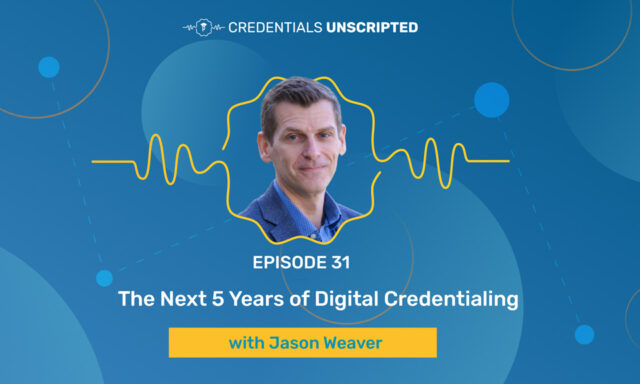
Parchment News
The Next 5 Years of Digital Credentialing
We use cookies to help you navigate efficiently and perform certain functions. You will find detailed information about all cookies under each consent category below.
The cookies that are categorized as "Necessary" are stored on your browser as they are essential for enabling the basic functionalities of the site. ...
Necessary cookies are required to enable the basic features of this site, such as providing secure log-in or adjusting your consent preferences. These cookies do not store any personally identifiable data.
Functional cookies help perform certain functionalities like sharing the content of the website on social media platforms, collecting feedback, and other third-party features.
Analytical cookies are used to understand how visitors interact with the website. These cookies help provide information on metrics such as the number of visitors, bounce rate, traffic source, etc.
Performance cookies are used to understand and analyze the key performance indexes of the website which helps in delivering a better user experience for the visitors.
Advertisement cookies are used to provide visitors with customized advertisements based on the pages you visited previously and to analyze the effectiveness of the ad campaigns.
Other cookies are those that are being identified and have not been classified into any category as yet.

Dual enrollment, sometimes referred to as dual credit or concurrent enrollment, enables high school learners to take college-level courses and earn college credits while also fulfilling requirements for high school graduation. It has been shown to increase the likelihood of completing high school and of earning a college degree and has become a powerful tool for improving access to higher education.
Previously, we’ve looked at the trends and benefits of dual enrollment, revealing how it’s shaking up the educational landscape for many learners. In this article, we dig deeper to see how dual enrollment can open doors to college for a broader range of learners, examine the persistent gaps in access to dual enrollment opportunities, and explore a strategy that community colleges are implementing to break down the barriers still standing in the way.
Dual enrollment programs hold significant promise for expanding access to post-secondary education, particularly for learners who might not otherwise consider college. By empowering high schoolers to earn college credits early, these programs can cut down the time and cost it takes to earn a degree, making a college degree more attainable. There is also strong evidence that dual enrollment improves academic outcomes for learners, including completing high school, enrolling in college, and completing college degrees.
According to the Community College Resource Center (CCRC), new national, state, and college-level IPEDS data on dual enrollment shows that more than 2.5 million high school learners participated in at least one dual enrollment course in the 2022-23 academic year. This means that nationally, high schoolers account for more than 21% of college enrollment. The National Alliance of Concurrent Enrollment Partnerships adds that learners who participate in dual enrollment are 32-56% more likely to attend college and complete their degrees compared to those who don’t.
Despite its great potential, dual enrollment doesn’t always deliver. The term “Programs of Privilege” was coined to highlight how these opportunities are frequently more accessible to learners in wealthier areas. This leaves those in underserved communities facing significant obstacles, highlighting a gap between the intended benefits of dual enrollment and its actual impact on diverse student populations.
According to the new IPEDS data, Black and Hispanic/Latino learners were underrepresented nationally in the 2022-23 academic year, which is consistent with previous analysis from CCRC on representation in dual enrollment.
Representation in Dual Enrollment

Furthermore, the “Random Acts of Dual Enrollment” concept illustrates how the inconsistent and unstructured implementation of dual enrollment offerings can lead to uneven credit transfer and variable student success. Most high school learners in dual enrollment are in basic, à la carte programs that, although helpful, often widen equity gaps. Adopting a more strategic approach is crucial to making dual enrollment a true gateway to higher education for all learners.
The Dual Enrollment Equity Pathways (DEEP) model proposed by CCRC offers a refreshing shift from traditional dual enrollment thinking. DEEP is designed to enhance equity and access in dual enrollment programs. Integrating guided pathways strategies aims to provide a structured and supportive framework that ensures all learners, particularly those from underserved backgrounds, can successfully transition from high school to college. This approach includes four key areas of practice:
According to CCRC, applying guided pathways to dual enrollment can help reduce inequities by providing targeted support and resources to students who might otherwise struggle; it’s all about simpler enrollment steps, personalized academic advising, and giving students the tools and support they need to thrive in college courses.
Opportunities to scale DEEP include expanding access for students in Career and Technical Education (CTE). Dual enrollment programs are instrumental in offering college credits to students in CTE programs and those pursuing work-based certificates. As highlighted in a recent Parchment podcast, these programs not only grant academic credit but also provide essential career skills and industry certifications — bridging the gap between secondary education and the workforce. That way, students gain a valuable edge for career readiness and further education.
Dual enrollment is a valuable opportunity, giving high school learners a head start on college coursework and future success. With the right strategies and tools, schools can ensure dual enrollment serves as a bridge to higher education for every learner.
Learn more about how Parchment can support your dual enrollment efforts, or schedule a meeting today!
